Advertisements
Chapters
2: Rational Numbers
3: Fractions (Including Problems)
4: Decimal Fractions (Decimals)
5: Exponents (Including Laws of Exponents)
6: Ratio and Proportion (Including Sharing in a Ratio)
7: Unitary Method (Including Time and Work)
8: Percent and Percentage
9: Profit, Loss and Discount
10: Simple Interest
11: Fundamental Concepts (Including Fundamental Operations)
12: Simple Linear Equations (Including Word Problems)
13: Set Concepts (Some Simple Divisions by Vedic Method)
14: Lines and Angles (Including Construction of angles)
15: Triangles
16: Pythagoras Theorem
▶ 17: Symmetry (Including Reflection and Rotation)
18: Recognition of Solids (Representing 3-D in 2-D)
19: Congruency: Congruent Triangles
20: Mensuration
21: Data Handling
22: Probability
![Selina solutions for Concise Mathematics [English] Class 7 ICSE chapter 17 - Symmetry (Including Reflection and Rotation) Selina solutions for Concise Mathematics [English] Class 7 ICSE chapter 17 - Symmetry (Including Reflection and Rotation) - Shaalaa.com](/images/concise-mathematics-english-class-7-icse_6:880cdcd6265b4864b6486afbf92875b0.jpg)
Advertisements
Solutions for Chapter 17: Symmetry (Including Reflection and Rotation)
Below listed, you can find solutions for Chapter 17 of CISCE Selina for Concise Mathematics [English] Class 7 ICSE.
Selina solutions for Concise Mathematics [English] Class 7 ICSE 17 Symmetry (Including Reflection and Rotation) Exercise 17 (A)
In the figure given below, draw the line (s) of symmetry, if possible:
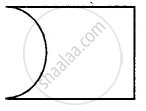
In the figure given below, draw the line (s) of symmetry, if possible:

In the figure given below, draw the line (s) of symmetry, if possible:
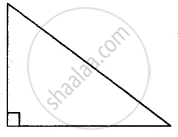
In the figure given below, draw the line (s) of symmetry, if possible:
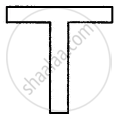
In the figure given below, draw the line (s) of symmetry, if possible:
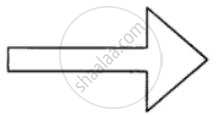
In the figure given below, draw the line (s) of symmetry, if possible:

In the figure given below, draw the line (s) of symmetry, if possible:
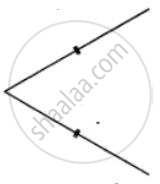
In the figure given below, draw the line (s) of symmetry, if possible:
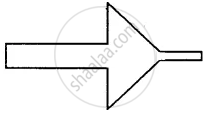
Write capital letters A to Z of English alphabet; and in each case, if possible, draw the largest number of lines of symmetry.
By drawing a freehand sketch of the following, draw the line (s) of symmetry, if any:
a scalene triangle
By drawing a freehand sketch of the following, draw the line (s) of symmetry, if any:
an isosceles right-angled triangle
By drawing a freehand sketch of the following, draw the line (s) of symmetry, if any:
a rhombus
By drawing a freehand sketch of the following, draw the line (s) of symmetry, if any:
a kite-shaped figure triangle
By drawing a freehand sketch of the following, draw the line (s) of symmetry, if any:
a rectangle
By drawing a freehand sketch of the following, draw the line (s) of symmetry, if any:
a square
By drawing a freehand sketch of the following, draw the line (s) of symmetry, if any:
an isosceles
Draw a triangle with no line of symmetry. In case, if possible, represent the line/ lines of symmetry by dotted lines. Also, write the special name of the triangle drawn.
Draw a triangle with only one line of symmetry. In case, if possible, represent the line/ lines of symmetry by dotted lines. Also, write the special name of the triangle drawn.
Draw a triangle with exactly two lines of symmetry. In case, if possible, represent the line/ lines of symmetry by dotted lines. Also, write the special name of the triangle drawn.
Draw a triangle with exactly three lines of symmetry. In case, if possible, represent the line/ lines of symmetry by dotted lines. Also, write the special name of the triangle drawn.
Draw a triangle with more than three lines of symmetry. In case, if possible, represent the line/ lines of symmetry by dotted lines. Also, write the special name of the triangle drawn.
Draw a quadrilateral with no line of symmetry. In case, if possible, represent the line/ lines of symmetry by dotted lines. Also, write the special name of the quadrilateral drawn.
Draw a quadrilateral with only one line of symmetry. In case, if possible, represent the line/ lines of symmetry by dotted lines. Also, write the special name of the quadrilateral drawn.
Draw a quadrilateral with exactly two lines of symmetry. In case, if possible, represent the line/ lines of symmetry by dotted lines. Also, write the special name of the quadrilateral drawn.
Draw a quadrilateral with exactly three lines of symmetry. In case, if possible, represent the line/ lines of symmetry by dotted lines. Also, write the special name of the quadrilateral drawn.
Draw a quadrilateral with exactly four lines of symmetry. In case, if possible, represent the line/ lines of symmetry by dotted lines. Also, write the special name of the quadrilateral drawn.
Draw a quadrilateral with more than four lines of symmetry. In case, if possible, represent the line/ lines of symmetry by dotted lines. Also, write the special name of the quadrilateral drawn.
Construct an equilateral triangle with each side 6 cm. In the triangle drawn, draw all the possible lines of symmetry.
Construct a triangle ABC in which AB = AC = 5 cm and BC = 5.6 cm. If possible, draw its lines of symmetry.
Construct a triangle PQR such that PQ = QR = 5 .5 cm and angle PQR = 90°. If possible, draw its lines of symmetry.
If possible, draw a rough sketch of a quadrilateral which has exactly two lines of symmetry.
A quadrilateral ABCD is symmetric about its diagonal AC. Name three sides of this quadrilateral which are equal.
Selina solutions for Concise Mathematics [English] Class 7 ICSE 17 Symmetry (Including Reflection and Rotation) Exercise 17 (B)
In the given figure, find the image of the point P in the line AB:
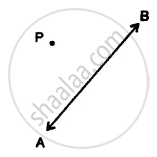
In the given figure, find the image of the point P in the line AB:

In the given figure, find the image of the line segment AB in the line PQ:
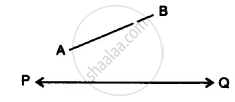
In the given figure, find the image of the line segment AB in the line PQ:

Complete the following table:
| Point | Reflection in | ||
| x-axis | y-axis | origin | |
| (i) (8, 2) | |||
| (ii) (5, 6) | |||
| (iii) (4, −5) | |||
| (iv) (6, −2) | |||
| (v) (−3, 7) | |||
| (vi) (−4, 5) | |||
| (vii) (−2, −7) | |||
| (viii) (−6, −3) | |||
| (ix) (4, 0) | |||
| (x) (−7, 0) | |||
| (xi) (0, −6) | |||
| (xii) (0, 7) | |||
| (xiii) (0, 0) | |||
A point P (7,3) is reflected in the x-axis to point P’. The point P’ is further reflected in v-axis to point P” Find :
(i) the coordinates of P’
(ii) the co-ordinates of P”
(iii) the image of P (7, 3) in origin.
A point A (- 5, 4) is reflected in y-axis to point B. The point B is further reflected in origin to point C. find :
(i) the co-ordinates of B
(ii) the co-ordinates of C
(iii) the image of A (- 5, 4) in x-axis.
The point P (3, – 8) is reflected in origin to point Q. The Point Q is further reflected in the x-axis to point R. Find :
(i) the co-ordinates of Q
(ii) the co-ordinates of R
(iii) the image of P (3, – 8) in the y-axis.
Each of the points A (3, 0), B (7, 0), C (- 8, 0), D (- 7, 0) and E (0, 0) is reflected in x-axis to points A’, B’, C’, D’ and E’ respectively. Write the co-ordinates of each of the image points A’, B’, C’, D’ and E’.
Each of the points A (0, 4), B (0, 10), C (0, – 4), D (0, – 6) and E (0, 0) is reflected in y-axis to points A’, B’, C’, D’ and E’ respectively. Write the co-ordinates of each of the image points A’, B’, C’, D’ and E’.
Each of the points A (0, 7), B (8, 0), C (0, − 5), D (− 7, 0) and E (0, 0) are reflected in origin to points A’, B’, C’, D’ and E’ respectively. Write the co-ordinates of each of the image points A’, B’, C’, D’ and E’.
Mark points A (4, 5) and B (− 5, 4) on a graph paper. Find A’, the image of A in x-axis and B’, the image of B in x-axis.
Mark A’ and B’ also on the same graph paper. Join AB and A’ B’ and find if AB = A’ B’?
Mark points A (6, 4) and B (4, – 6) on a graph paper.
Find A’, the image of A in y-axis and B’, the image of B in the y-axis. Mark A’ and B’ also on the same graph paper.
Mark points A (– 6, 5) and B (– 4, – 6) on a graph paper. Find A’, the image of A in origin and B’, the image of B in origin. Mark A’ and B’ also on the same graph paper. Join AB and A’ B’. Is AB = A’ B’?
Selina solutions for Concise Mathematics [English] Class 7 ICSE 17 Symmetry (Including Reflection and Rotation) Exercise 17 (C)
How many lines of symmetry does a rhombus have?
What is the order of rotational symmetry of a rhombus?
Show that the following figure has two lines of symmetry and a rotational.

Show that the following figure has two lines of symmetry and a rotational.
![]()
Show that the following figure has two lines of symmetry and a rotational.

Show that the following figure has two lines of symmetry and a rotational.

Name a figure that has a line of symmetry but does not have any rotational symmetry.
In the following figure, draw all possible lines of symmetry and also write the order of rotational symmetry:

In the following figure, draw all possible lines of symmetry and also write the order of rotational symmetry:

In the following figure, draw all possible lines of symmetry and also write the order of rotational symmetry:

In the following figure, draw all possible lines of symmetry and also write the order of rotational symmetry:

In the following figure, draw all possible lines of symmetry and also write the order of rotational symmetry:
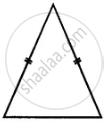
Solutions for 17: Symmetry (Including Reflection and Rotation)
![Selina solutions for Concise Mathematics [English] Class 7 ICSE chapter 17 - Symmetry (Including Reflection and Rotation) Selina solutions for Concise Mathematics [English] Class 7 ICSE chapter 17 - Symmetry (Including Reflection and Rotation) - Shaalaa.com](/images/concise-mathematics-english-class-7-icse_6:880cdcd6265b4864b6486afbf92875b0.jpg)
Selina solutions for Concise Mathematics [English] Class 7 ICSE chapter 17 - Symmetry (Including Reflection and Rotation)
Shaalaa.com has the CISCE Mathematics Concise Mathematics [English] Class 7 ICSE CISCE solutions in a manner that help students grasp basic concepts better and faster. The detailed, step-by-step solutions will help you understand the concepts better and clarify any confusion. Selina solutions for Mathematics Concise Mathematics [English] Class 7 ICSE CISCE 17 (Symmetry (Including Reflection and Rotation)) include all questions with answers and detailed explanations. This will clear students' doubts about questions and improve their application skills while preparing for board exams.
Further, we at Shaalaa.com provide such solutions so students can prepare for written exams. Selina textbook solutions can be a core help for self-study and provide excellent self-help guidance for students.
Concepts covered in Concise Mathematics [English] Class 7 ICSE chapter 17 Symmetry (Including Reflection and Rotation) are Concept for Idea of Rotational Symmetry, Observations of Rotational Symmetry of 2-d Objects. (900, 1200, 1800), Concept of Symmetry, Concept of Reflection Symmetry.
Using Selina Concise Mathematics [English] Class 7 ICSE solutions Symmetry (Including Reflection and Rotation) exercise by students is an easy way to prepare for the exams, as they involve solutions arranged chapter-wise and also page-wise. The questions involved in Selina Solutions are essential questions that can be asked in the final exam. Maximum CISCE Concise Mathematics [English] Class 7 ICSE students prefer Selina Textbook Solutions to score more in exams.
Get the free view of Chapter 17, Symmetry (Including Reflection and Rotation) Concise Mathematics [English] Class 7 ICSE additional questions for Mathematics Concise Mathematics [English] Class 7 ICSE CISCE, and you can use Shaalaa.com to keep it handy for your exam preparation.
